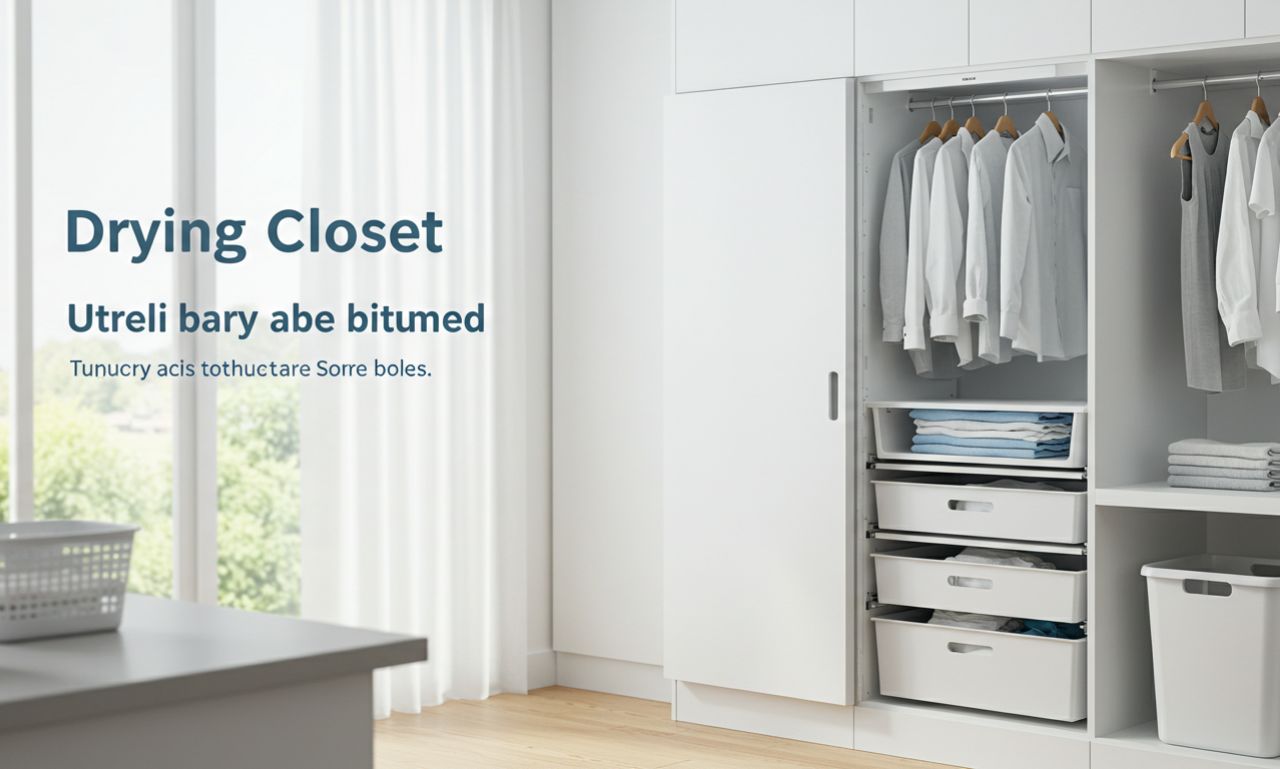A drying closet is an innovative appliance designed to dry clothes efficiently while preserving their quality. Unlike conventional tumble dryers, which use high-speed rotation and heat, a drying closet gently circulates warm air around hanging garments. This makes it ideal for delicate fabrics, outerwear, and items that cannot be tumble-dried.
The concept has gained popularity in homes, hotels, and even commercial laundry facilities, offering a modern solution to the age-old challenge of drying clothes quickly without damage.
How a Drying Closet Works
A drying closet operates by creating a controlled environment where warm, dry air circulates around clothing. Items are typically hung on racks or rails inside the unit, and the air is distributed evenly to remove moisture.
Key components include:
-
Heating Element: Generates warm air.
-
Fan System: Ensures even airflow.
-
Humidity Sensors: Automatically stop drying when clothes reach the desired dryness.
Unlike a dryer drum, the clothes remain stationary, preventing wear, shrinkage, or tangling.
Benefits of a Drying Closet
The drying closet offers several advantages over traditional drying methods.
1. Gentle on Fabrics
Because there is no tumbling motion, fabrics are not stretched or damaged. Delicate materials such as silk, wool, and lace can be dried safely.
2. Energy Efficiency
Some models consume less electricity than a tumble dryer, especially when equipped with heat pump technology.
3. Odor Removal
Certain drying closet models have refresh cycles that remove odors from clothing without the need for washing.
4. Versatile Use
It can handle shoes, hats, and winter coats—items unsuitable for traditional dryers.
Types of Drying Closets
There are different kinds of dryingcloset designs to suit various needs.
Built-in Drying Closet
Installed as part of your laundry room cabinetry, offering a seamless look.
Freestanding Drying Closet
Portable and can be placed in any room with proper ventilation.
Commercial Drying Closet
Larger capacity models used in hotels, gyms, and uniform services.
Best Materials to Dry in a Drying Closet
The dryingcloset is perfect for a range of fabrics:
-
Wool sweaters
-
Suede jackets
-
Silk blouses
-
Leather shoes
-
Sportswear
-
Outerwear like ski suits and raincoats
It’s especially useful for garments with “line dry only” or “dry flat” instructions.
Choosing the Right Drying Closet
When selecting a dryingcloset, consider the following:
-
Capacity: Match it to the size of your household.
-
Drying Modes: Look for options like quick dry, delicate, and refresh.
-
Energy Efficiency: Choose models with low energy consumption ratings.
-
Noise Level: Ideal if it will be placed in living areas.
-
Additional Features: UV sterilization, dehumidifying, and programmable timers.
Maintenance Tips for a Drying Closet
A well-maintained dryingcloset will last longer and perform better.
-
Clean the Air Filters: Prevent dust buildup that can block airflow.
-
Wipe the Interior: Use a damp cloth to remove lint and debris.
-
Check Heating Elements: Ensure they function efficiently.
-
Follow Manufacturer Instructions: Avoid damage to internal components.
Drying Closet vs. Tumble Dryer
The dryingcloset and tumble dryer serve the same purpose but work differently.
| Feature | Drying Closet | Tumble Dryer |
|---|---|---|
| Fabric Care | Gentle, no tumbling | Can be rough on fabrics |
| Noise Level | Quieter | Louder |
| Versatility | Handles more fabric types | Limited to washable items |
| Drying Speed | Slightly longer | Faster |
While a tumble dryer may be quicker, the dryingcloset wins for delicate care and garment longevity.
Modern Features in Advanced Drying Closets
Today’s dryingcloset models are packed with advanced features:
-
Steam Functions: Reduce wrinkles and sanitize clothes.
-
App Connectivity: Control and monitor from your phone.
-
Energy-Saving Sensors: Stop the cycle automatically when dry.
-
Quiet Operation: Ideal for small apartments.
Environmental Impact of a Drying Closet
A dryingcloset can be more eco-friendly than other drying methods, especially when paired with renewable energy sources. It reduces the need for dry cleaning, which uses chemicals harmful to the environment. Additionally, preserving garment quality means clothes last longer, reducing textile waste.
Cost Considerations
The dryingcloset is generally more expensive upfront than a tumble dryer. Prices range from mid-level home units to high-end luxury models. However, the savings in garment replacement, reduced dry cleaning bills, and lower energy use can offset the initial investment over time.
Conclusion
The dryingcloset is an innovative, fabric-friendly solution for modern laundry care. Its gentle drying process, versatility, and advanced features make it a valuable addition to any home, especially for those who value garment longevity and energy efficiency.
As more people seek ways to care for their clothing while saving time and resources, the dryingcloset is set to become a household essential—blending tradition with cutting-edge technology to keep clothes looking their best.
